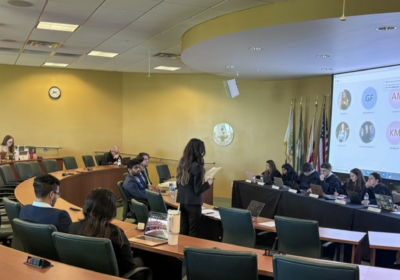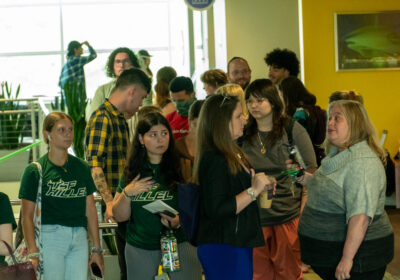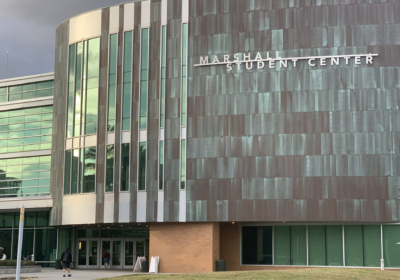UP offers training programs for active threats

The Active Threat Preparedness Training encourages awareness of one’s surroundings and planning routes of escape in the event of an active shooter situation. ORACLE FILE PHOTO
In light of recent events such as the shooting at Marjory Stoneman Douglas High School, what may weigh heavy on students’ minds is safety on their own school campus.
University Police (UP) offers Active Threat Prepared Training sessions that provide students, faculty and staff with skills and information to prepare for potential campus threats.
The Active Threat Preparedness Training is modeled off the training for officers by encouraging awareness of one’s surroundings and planning routes of escape in the event of an emergency.
Police Chief Chris Daniel helped develop the Active Threat Preparedness Training program as a means of sharing this approach to safety. Daniel said he hopes students and faculty will be able to contribute to the general safety of the campus by implementing safety procedures and making awareness of surroundings a habit.
“The best way for me to put it is: The police are not, during an active threat situation — we are not going to be able to tell every individual, ‘Go out of your office, take 15 steps down, go out the hallway,’ or anything,” Daniel said. “That person knows their environment; they know their physical abilities or disabilities. They know any challenges that their environment is going to prevent or to present.”
While USF has experienced the occasional armed robbery or drunk student using a firearm in a parking garage, UP Public Information Representative Audrey C. Clarke said UP does not experience the level of activity other agencies do.
Joseph Kelemen, a junior majoring in information technology, said that despite recent events, he feels safe on campus and his opinion on campus safety hasn’t changed.
“There’s always a lot of people during the day and at night and it’s very well-lit so I don’t feel too uncomfortable walking anywhere by myself,” Kelemen said. “I mean at this point, if someone does bring a gun, I can’t do anything about it.”
The last prominent mass shooting on a college campus was the Virginia Tech massacre in 2007.
Jessica Zelitt, a junior majoring in public health, said the campus is generally safe, but she may not be prepared for an active threat, as preemptive protocol practice for the larger student population is not a current procedure.
“I think, overall, I generally feel safe on campus,” Zelitt said. “I think, though, that if there were to be a unsafe situation that were to occur on campus, I wouldn’t necessarily know how to handle it. We don’t do drills or anything like that.”
Daniel said the popularity of the program offered is changes based on recent events that prompt concern among people.
“We’ve had the program available for at least a year, probably more,” Daniel said. “It’s one of those things that nobody really makes the request until something triggers the need or the interest and then we’ll have a peak of requests. Now, if we had a lot of thefts, we’d have people (asking for) property (protection training). So, it depends on the trend that’s going on at the time. We do try to make the information available on our web site to help prompt people to know that it’s there.”
One of the ways Daniel said professors can help ensure campus safety is by paying attention to the students and reaching out to the Students of Concern Assistance Team (SOCAT) office about concerns.
“If you get papers from students who seem out of order or if there’s something in their writings that’s a concern, bring it up,” Daniel said. “Bring it to SOCAT. Let the practices and procedures that have been established work for them. If there’s a question about a student in a class, or another threat in the class, call us. Let us talk with them. We’ll be happy to sit down with the professor and discuss concerns. And all our officers are well-connected. They know these channels in the university and they can take that information to the appropriate level to try to get them some help.”
UP does not support arming students, faculty or staff, and “believes that active shooter situations are best handled by trained and certified law enforcement personnel,” according to Clarke.
Daniel said he believes active threats and the problems addressing them are symptomatic of larger social trends that have communities more divided than in the past.
“The police can’t be everywhere all the time,” Daniel said. “So, this becomes a community issue. Where we used to have a sense of community, people watched for one other or would see things going on and report it, that has diminished over time. If you see something that looks odd, follow your instincts. We’re skilled at going into uncomfortable situations and delicately walking out of them, apologizing for the inconvenience. Call. That’s what we’re here for.”
~Additional reporting by Miki Shine






